Your teacher explains to you that a glass of water is neutral. What does she mean by this?
A. The water has no protons or electrons.
B. The water is unaffected by static electricity.
C. The water has an equal number of protons and electrons.
D. The water is not attracted to positively or negatively charged objects.
The rate at which charged particles flow is called
A. current
B. voltage
C. resistance
D. potential difference
You have learned that resistance in a wire changes with both the length and diameter of the wire. Which wire would offer the most resistance to an electrical current?
A. a wire that is 50 cm long and has a diameter of 3 mm
B. a wire that is 25 cm long and has a diameter of 3 mm
C. a wire that is 50 cm long and has a diameter of 1.5 mm
D. a wire that is 25 cm long and has a diameter of 1.5 mm
The blow dryer transforms electrical energy into what other forms of energy?
A. chemical and mechanical
B. chemical and thermal
C. thermal and mechanical
D. mechanical and electrical
A) Electrode
B) Electrolyte
C) Anode
D) Cathode

Which of the trials will produce the most current in the galvanometer?
A) 1
B) 2
C) 3
D) 4
In science class, you learned that a conductor is a material that passes electrons easily and that an insulator is a material that does a poor job of conducting (or passing) electrons. How are the electrons in an insulator different from the electrons in a conductor?
A. The electrons in an insulator are tightly bound to the positively charged nucleus.
B. The electrons in an insulator are bound loosely to the positively charged nucleus.
C. The electrons in an insulator flow toward the negative terminal.
D. There are no electrons present in insulating materials.
Using the hair dryer near water could result in a dangerous short circuit. This is because
A. water will corrode and ruin the switch
B. water provides an alternative path for current to flow
C. the fan is not meant to force water
D. tap water cannot conduct electricity
A) a short, thick wire
B) a long, thick wire
C) a short, thin wire
D) A long, thin wire
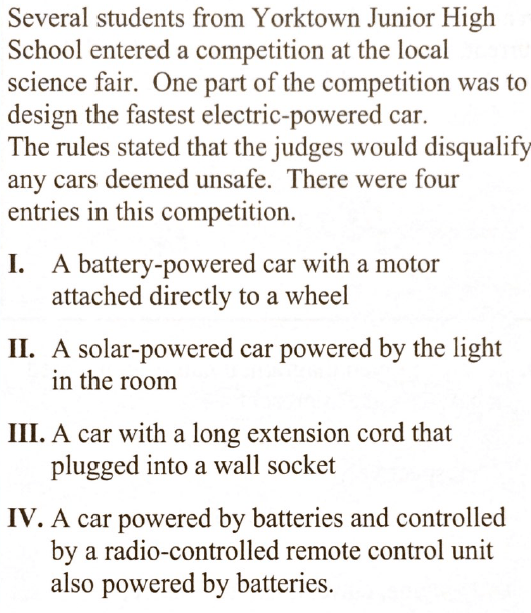
Energy is transformed in car 1 from
A) mechanical to light to electrical
B) light to electrical to mechanical
c) sound to mechanical to electrical
d) chemical to electrical to mechanical

Starting with statement A determine if the statements are true (1) or false (2). Write a 4 letter number system composed of 1s and 2s.
1. Which of the following modifications to an electromagnet will increase its strength?
A) Using a larger iron core
B) Using fewer coils of copper wire
C) Increasing the resistance of the iron core
D) Decreasing the current passing through the coils of copper wire
After removing the laundry from the clothes dryer, you notice that two socks are sticking together. An explanation for what has happened is
A. protons have moved from one sock to the other, making one positively charged sock and one negatively charged sock
B. one of the socks has gained electrons from the other sock, causing it to become negative while causing the other sock to become positive
C. both socks have gained protons and, as a result, are attracted to each other
D. both socks have gained electrons and, as a result, are attracted to each other
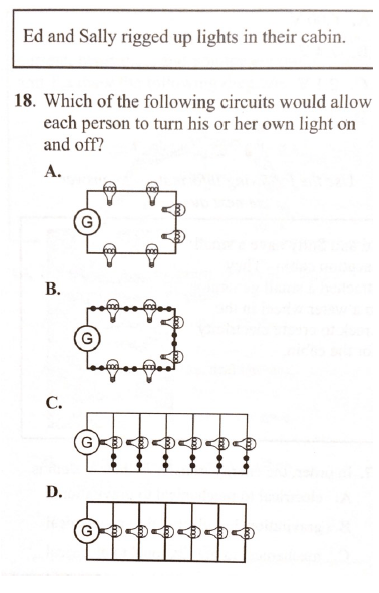
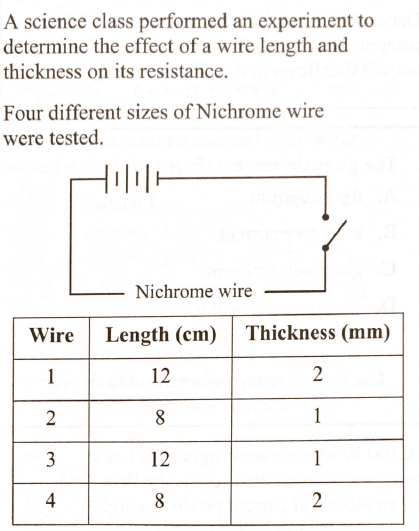
Which of the following wires would produce the lowest ohmmeter reading when connected to a battery of three cells?
A) wire 1
B) wire 2
C) wire 3
D) wire 4

The energy conversions that take place from the time the plunger is pushed down to the time the explosives detonate are from:
A) electrical to mechanical to chemical
B) mechanical to electrical to chemical
C) mechanical to electrical to mechanical
D) mechanical to chemical to electrical
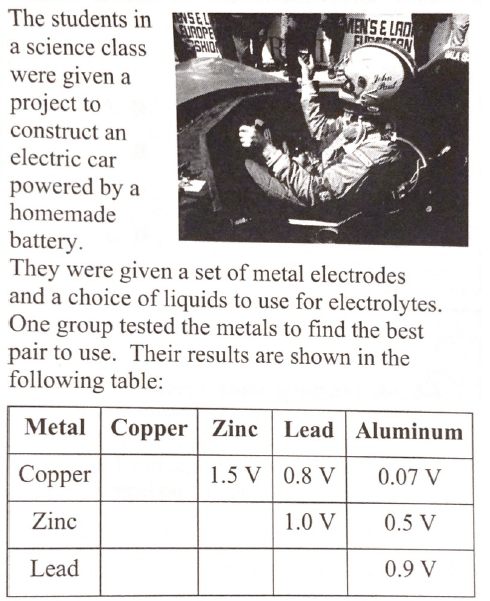
The best combination of metals to use as electrodes would be?
A) copper and aluminium
B) aluminium and zinc
C) zinc and copper
D) lead and zinc
Non-conductors, or insulators, must be neutralized with this ...
A. discharge
B. radiation
C. ionization
D. recharger
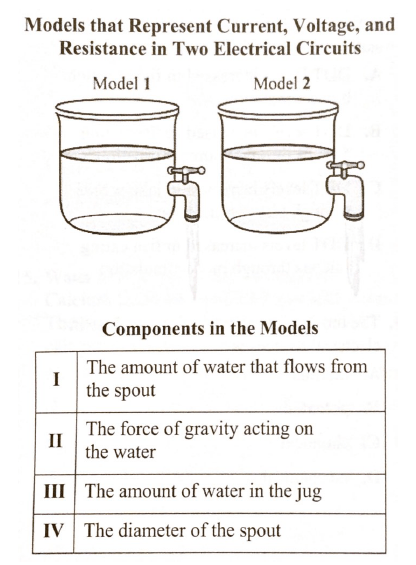
Which of the components in the models represents current in a circuit?
A) I
B) II
C) III
D) IV

When connected, which of the electrical circuits described above will result in the dimmest light?
A) circuit 1
B) circuit 2
C) circuit 3
D) circuit 4
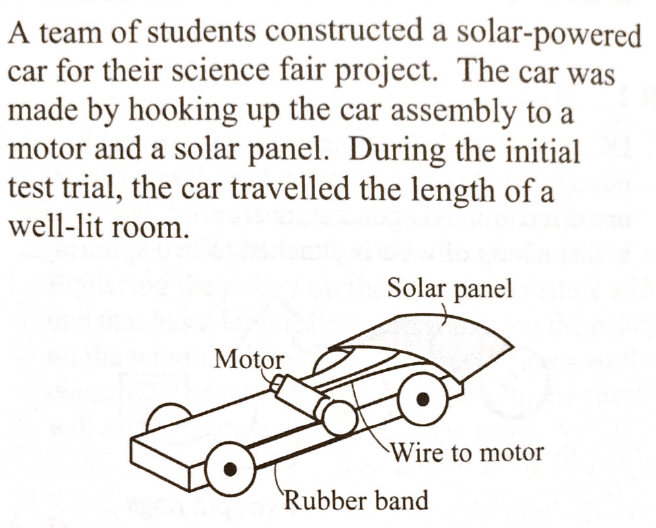
In travelling across the room, the car converted:
A)solar energy into electrical energy into mechanical energy
B) solar energy into mechanical energy into electrical energy
C) solar energy into potential energy into chemical energy
D) solar energy into thermal energy into chemical energy
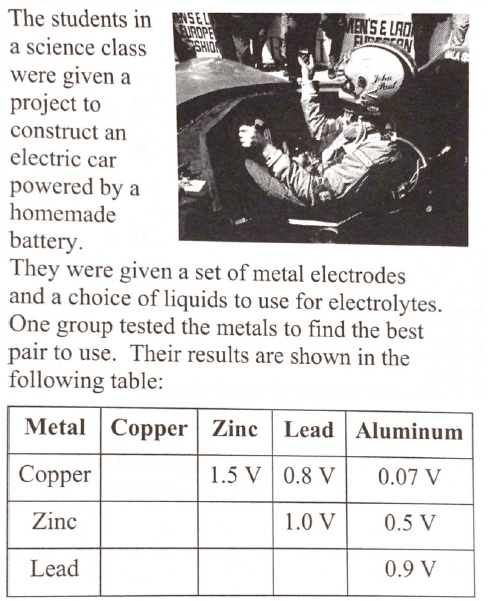
Which of the following combinations of cells, connected in series, would not make a 3 V battery?
A) 3 lead & zinc cells
B) 2 copper& zinc cells
C) 6 Aluminium& zinc cells
D) 3 aluminium& lead cells
Hans Christian Oersted found that an electric current created a magnetic field. When electrical energy passes over a compass, the compass needle ...
A. spins
B. is deflected
C. rotates clockwise
D. rotates counterclockwise
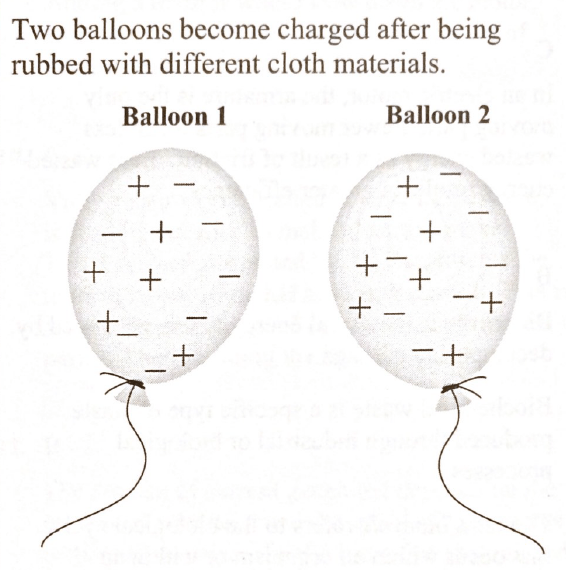 What will happen if balloon 1 is brought near balloon 2?
What will happen if balloon 1 is brought near balloon 2?A) Ballon 1 will repel balloon 2
B) Balloon 1 will attract balloon 2
C) Balloon 1 will fuse with ballon 2
D) Ballon 1 will have no effect on ballon 2
A) Variable resistor
B) Circuit breaker
C) Generator
D) Ammeter
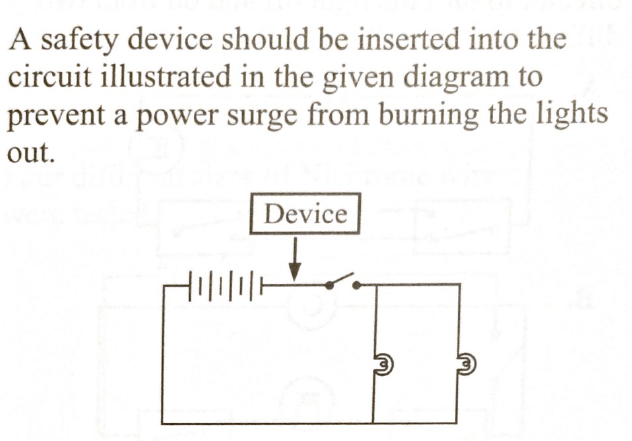
What is the name of this device?
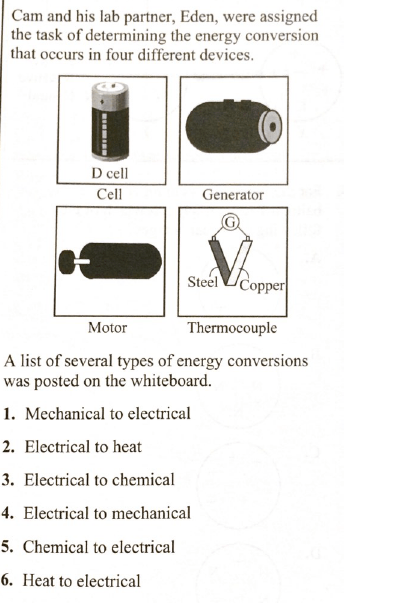
Match each energy device with the energy conversion that takes place in it.
____ ____ _____ ______
Cell Generator Motor Thermocouple
Mr. Jones was trying to make an electromagnetic coil to demonstrate the power it has. His coil worked, but not very well. The most likely reason was because the ...
A. coil was made of copper wire
B. battery was brand new
C. metal core was too thin
D. battery was dead
A) static electricity produced by like charges
B) current electricity produced by neutral objects
C) static electricity produced by unlike charged
D) current electricity produced by conducing clothes
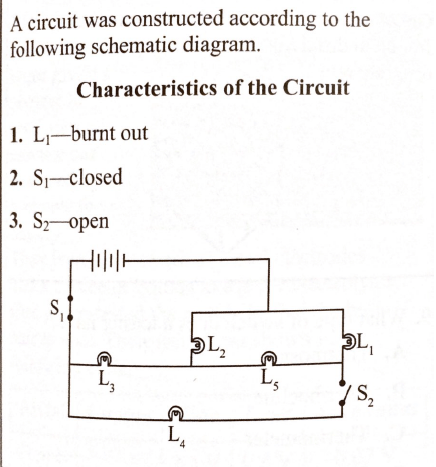
If the three characteristics were considered in this circuit, which lamps would continue to light?
A) only L2
B) L2 and L3
C) L2, L3, and L5
D) L2, L3, and L4
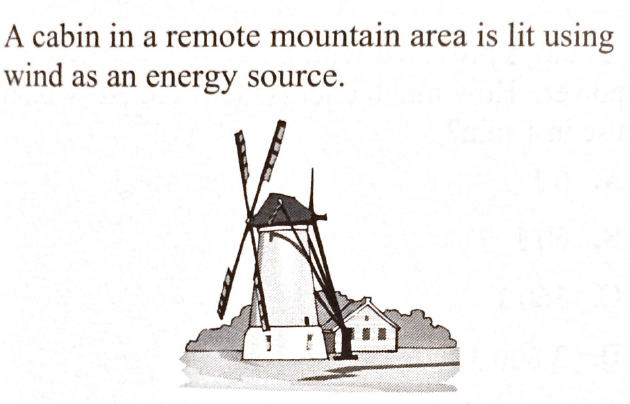
The energy conversion taking place to light the cabin is:
A) electrical to light to mechanical
B) mechanical to light to electrical
C) electrical to mechanical to light
D) mechanical to electrical to light
What arrangement of three cells will result in greatest electric current?
Electric effects can be created using a magnet. In1831 Michael Faraday (and Joseph Henry) discovered ...
A. electrolysis
B. electric charges
C. electromagnetic radiation
D. electromagnetic induction
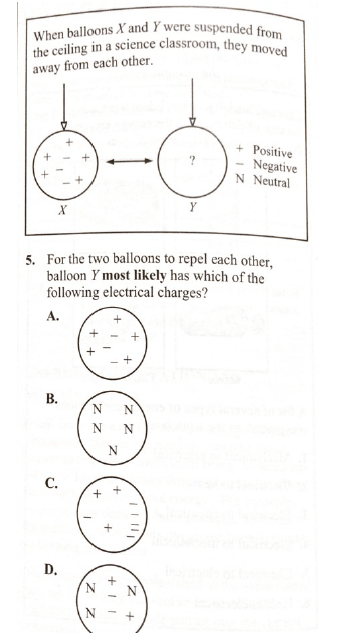
In order to measure the electrical current in a circuit, a galvanometer is connected...
A) in series to the circuit
B) in parallel to the circuit
C) at any point in the circuit
D) near the cell in the circuit
A) 5
B) 3
C) 10
D) 12
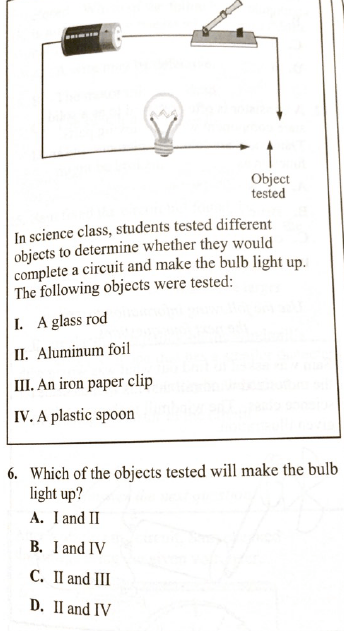
Which of the following could be used as an electrolyte?
A) boric acid
B) carbon dioxide
C) calcium bromide
D) CH2O
E) A and C
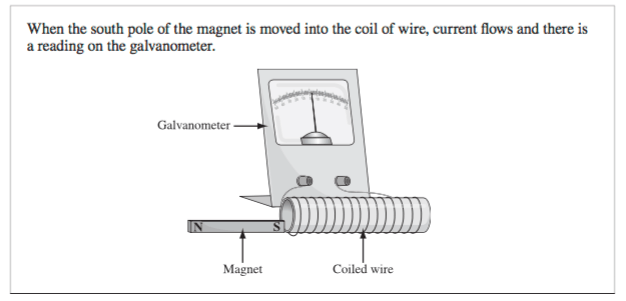
Which of the following changes would not increase the reading on the galvanometer?
A. Moving the magnet faster in the coil
B. Wrapping more wire around the coil
C. Reversing the poles of the magnet
D. Using a stronger magnet